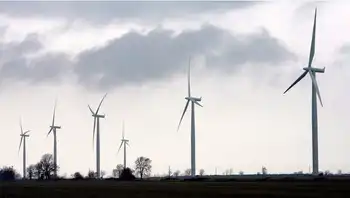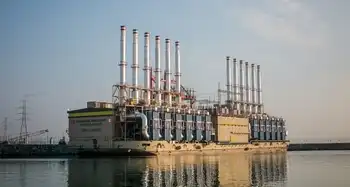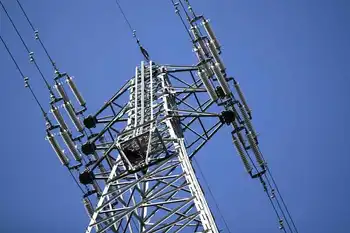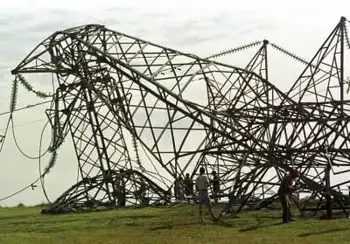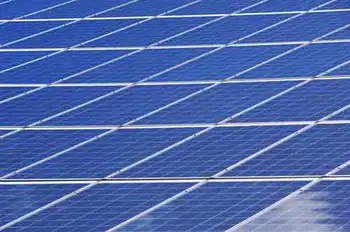Fall protection for wind industry grows apace
By Occupational Health & Safety
Protective Relay Training - Basic
Our customized live online or in‑person group training can be delivered to your staff at your location.

- Live Online
- 12 hours Instructor-led
- Group Training Available
The fall protection industry in the wind energy segment is growing directly in line with the wind energy industry, which is set to be one of the fastest-growing sectors of the energy industry in the world. The United States is growing dramatically in this sector; in fact, the United States is set to be the global leader in the output of wind-produced energy.
Wind power is now one of the largest sources of new electricity generation of any kind. According to an American Wind Energy Association market report, wind projects accounted for 30 percent of all new power generating capacity added in this country in 2007.
A natural outcome of any rapidly growing industry is product development that must keep up with fast-paced growth. Specific harnesses, lanyards, climbing systems, vertical systems, and rescue systems are being developed to meet global demands and requirements for fall protection equipment used during tower construction, maintenance, and rescue situations.
Wind turbine installation and maintenance are not easy tasks; a turbine is a high-risk environment with a number of danger areas where workers are exposed to fall risk. Workers must be aware of the safety hazards and be supplied with appropriate fall protection equipment, as well as training in the proper use of that equipment.
Fall protection is a major consideration for three overarching jobs within the industry: turbine installation, maintenance, and potential worker rescue.
During the tower erection stage, the main fall protection system is a ladder outfitted with a vertical fall arrest system that is installed in individual sections of the tower. Not all ladder systems have built-in vertical fall arrest systems. If that is the case, one can be specified and installed.
Once the tower has been erected, the nacelle, the structure at the top of the tower that houses all electrical control units, will be installed. Cables that run the length of the tower must be installed either from a ladder or a service lift, requiring a minimum of a full body harness and lanyard.
Typically, workers installing the tower will work all day in fall arrest equipment. Thus, harnesses must be comfortable, lightweight, and have multiple anchor points to last through long days on the job. Additionally, equipment should incorporate tool-carrying accessories to keep productivity high and be very durable to handle extended wear. Crews also should consider hydration systems that clip onto harnesses, easing the burden of working at heights and preventing dropped-object injuries.
Once the tower is up and running, separate crews will need to maintain it and make sure it is operating properly. Maintenance work might include cleaning turbine blades or replacing/ repairing electrical control units in the nacelle. In order to complete these jobs and others, workers often have to climb the ladder inside the tower to reach the nacelle at the top of the tower.
Safety equipment will be the same as for tower erection. Maintenance and repair of control mechanisms for the blades will involve accessing the hub of blades from the outside of the nacelle. This dramatically increases the potential for a fall. Specialized fall protection equipment, such as a vacuum anchor that suctions to the surface without damaging it, will need to be used if a permanent anchor is not available.
When it comes to cleaning the blades, more specialized access equipment and rope access techniques will be used. This can be extremely hazardous and dangerous work. Crews should not take any chances at such extreme heights — especially, as in the case of many turbines, when working at a remote location.
One of the major differentiators of wind energy fall protection equipment is the rescue equipment that is required. Wind farms are often located in remote areas where it may take rescue crews longer to arrive. On-site rescue teams should be properly trained and be able to perform rescue operations quickly and effectively. In order to do that, they need rescue equipment that is quick to set up and easy to use.
The difference between a non-injury fall and one resulting in serious worker harm is related to how quickly the fallen worker is rescued. The longer the fallen worker is suspended or trapped, the worse his injuries could be.
Rescue and evacuation from the upper reaches of the tower can be almost impossible from the ground by conventional methods. That said, a rescue plan should be developed prior to beginning any work on a tower. The plan should outline the common hazards that could occur during wind turbine construction and maintenance, such as a fire or complete mechanical shutdown.
Self rescue, personal evacuation, and easy-to-use casualty evacuation equipment is a necessity for personnel working on wind turbines. The major component of any rescue and evacuation is speed. Rapid descent, available for multiple users in the event of an emergency, is an absolute must. The tower should be properly equipped with self rescue and casualty evacuation equipment at multiple locations within the tower, including the nacelle.
All rescue and evacuation equipment should be quick and easy to use. If equipment is not permanently installed, it will need to be lightweight and quick to use in relatively confined areas.
Confined spaces are one of the most challenging rescue situations. It is not easy for rescuers to get to the fallen worker through narrow openings. This may lead to poorly planned attempts to rescue someone. Two thirds of deaths in confined space rescue involve people trying to rescue someone else.
Besides a proper rescue plan, another key to a successful rescue is proper training. The most effective training sessions have a good mixture of classroom and hands-on, practical training. In the life-and-death field of fall protection, equipment must work, and it must meet and exceed even the most stringent standards. But even the best fall protection equipment must be used, stored, and maintained properly for it to work and save a workerÂ’s life.
In the high-risk industry of wind turbine construction and maintenance, safety considerations are one of the main priorities. The wind energy industry will continue to grow in 2009. In fact, if 2007 is any indication — the United States commissioned a record 5,244 MW of wind power that year, double the 2006 level — 2008 and 2009 could easily set new records.
Under President-elect Barack Obama, the wind energy industry should expect a continued investment during the next 10 years. ObamaÂ’s energy plan stipulates that 10 percent of U.S. power come from renewable sources by 2012 and 25 percent by 2025 by investing $150 billion in the next 10 years to fund clean-energy projects.
The wind energy industry is booming not only in the United States; it is a truly global phenomenon. More than 70 countries are involved in building wind towers or developing products for this industry, meaning weÂ’ll likely be hearing a lot more from this industry in the future.





